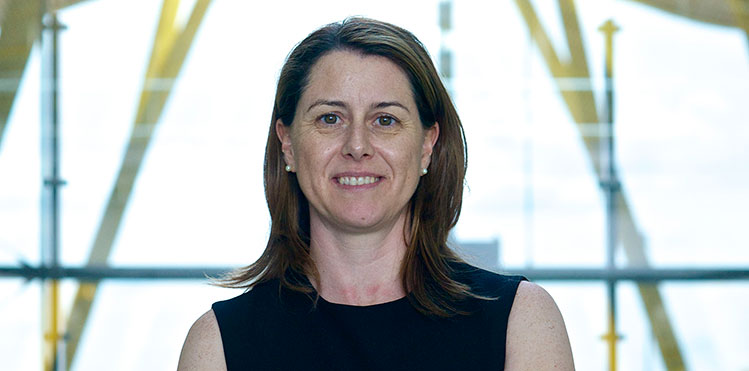Adolfo Suárez Madrid-Barajas is the European airport with the greatest volume of flight connections between Europe and Latin America. The airport’s strategy to boost air connectivity to South America and the continuous introduction of advanced technical innovations contributed to it winning this year’s ACI EUROPE Best Airport Award in the ‘Over 25 million passengers’ category. Elena Mayoral, Director, Adolfo Suárez Madrid-Barajas Airport, spoke to Marta Dimitrova.

Elena Mayoral, Director, Adolfo Suárez Madrid-Barajas Airport: “We are permanently working on implementing technological solutions to all airport processes, by developing new applications and updating existing ones concerning passenger information, assistance to persons with reduced mobility, security controls, baggage claim, etc.”
Promoting connectivity with Latin America is one of the main strategies of Adolfo Suárez Madrid-Barajas Airport’s Marketing Plan, devised by the airport’s Route Development Committee, which is made up of the Region of Madrid, Madrid City Council, Turespaña, Chamber of Commerce and Aena. “There are currently 15 airlines operating 25 destinations in 17 Latin American countries, which amount to approximately 15% of the total number of passengers at the airport,” comments Elena Mayoral, Director, Adolfo Suárez Madrid-Barajas Airport.
The airport grew by 7.7% to over 50 million passengers in 2016. The main reason behind this success is the promotion of the hub model. Mayoral explains that 25% of all available seats from Europe to Latin America are offered to Adolfo Suárez Madrid-Barajas Airport. Moreover, the sustainable development of the low-cost carriers, and greater connectivity on long-haul routes which led to the launch of six new services to Asia during the last year, also contributed to the airport’s success. “The fact that the shortest route between many areas in Asia and Latin America runs through Madrid must also be considered,” she adds.
So far in 2017, traffic figures have been very positive. Traffic volume in July rose to over five million passengers, which is the best monthly achievement in the history of the airport.
Meanwhile, the ACI EUROPE Best Airport Awards judges also noted the airport’s continuous introduction of advanced technical innovations, in particular its achievements in safety management, as well as improvements to the passenger experience, such as monitoring queueing times at security checks, ambient music, art exhibitions and its Personal Shopper Service.
Improving customers, companies and passengers’ experience is an essential part of the management strategy of the airport. “Making progress in excellence at security checkpoints, optimising signposting, renovating facilities, and making areas more comfortable, are all objectives pursued by the Customer Experience Enhancement Project,” says Mayoral. “It’s a step further in excellence, since we are interested in learning about passengers’ opinion not only through regular ASQ surveys, but also through information obtained on a daily basis in order to take remedial action immediately, if necessary, thus making daily progress in offering the best possible service. In this regard, surveys on pilot projects carried out before the project is actually developed, as well as the information from over 100 ‘happy or not happy’ devices at the airport, are proving to be particularly useful.”
Airport Carbon Accredited: Level 2 Reduction
Adolfo Suárez Madrid-Barajas Airport has recently renewed its accreditation at Level 2 Reduction of ACI’s Airport Carbon Accreditation, which acknowledges the airport’s efforts to manage and reduce its CO2 emissions. The airport has implemented an Environmental Management System that identifies all aspects that have a significant impact on the environment. The management system then establishes any necessary action to be taken, determines the responsibilities of each department and sets an annual series of objectives aimed at reducing the impact of the company on the environment. For this year, the airport has scheduled measures to reduce emissions, mainly related to the updating of lights and replacement of escalators, lifts and travellators in the terminals. “In addition, the measures proposed by the airport will continue reducing emissions and are aimed at obtaining Level 3 Optimisation of Airport Carbon Accreditation by 2020.”
Looking ahead, the airport’s main priority is to maintain its strong relationship with Latin America and Asia. “As an airport managing company, it is of utmost importance to continue connecting Madrid and Spain to the rest of the world through new routes and strengthening existing ones. But our greatest ambition is to deal with the increase in traffic demand with high-quality standards which will exceed our passengers’ expectations,” Mayoral concludes.







